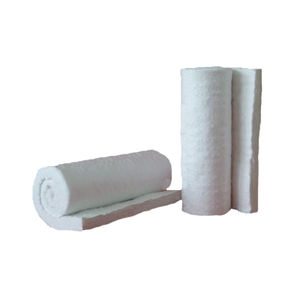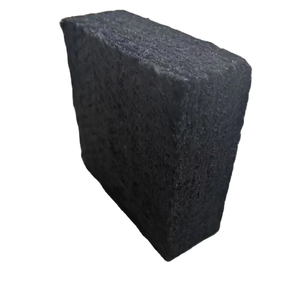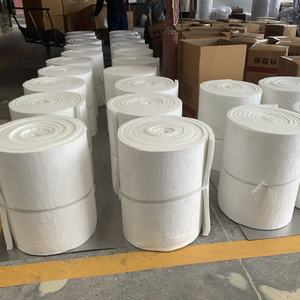Professional industry ceramic supplier, silicon nitride, silicon carbide, aluminum nitride and any other kinds of ceramics.
PRODUCT PARAMETERS
Description
Overview of Industrial design ceramic Fiber felt, aluminum silicate fiber, and other insulation materials, blanket products.
Industrial design ceramic Fiber felt, aluminum silicate fiber, and other insulation materials, blanket products. is a lightweight, high-temperature insulation material composed primarily of alumina-silica. It is manufactured through a melting and spinning or blowing process, resulting in a flexible, wool-like textile. This material is engineered to provide exceptional thermal management, conserving energy and protecting equipment in extreme temperature environments across various industries.
Features of Industrial design ceramic Fiber felt, aluminum silicate fiber, and other insulation materials, blanket products.
-
Excellent Thermal Stability: Withstands continuous operating temperatures up to 1260°C (2300°F) and higher for certain grades, with minimal shrinkage.
-
Low Thermal Conductivity: Provides highly efficient insulation, reducing heat loss and improving energy efficiency.
-
Lightweight & Low Heat Storage: Offers low thermal mass, enabling rapid heat-up and cool-down cycles for improved process control and energy savings.
-
Thermal Shock Resistance: Highly resistant to damage from rapid temperature changes.
-
Excellent Flexibility & Resilience: Can be fabricated into blankets, boards, papers, and textiles to fit complex shapes and applications.
-
Good Chemical Stability: Resists attack from most corrosive agents, except strong alkalis and hydrofluoric acid.
Specification of Industrial design ceramic Fiber felt, aluminum silicate fiber, and other insulation materials, blanket products.
Ceramic fiber felt offers strong heat insulation. It handles extreme heat well. This material withstands temperatures over 2300°F (1260°C). Its low heat transfer keeps things hot or cold efficiently. The felt is lightweight. This makes it easy to handle and install. It also resists most chemicals. Common thicknesses are 0.25 inches to 2 inches. Density ranges from 8 to 16 pounds per cubic foot. Use it for furnace linings, pipe insulation, and expansion joints. It works well for gaskets too.
Aluminum silicate fiber blanket is similar. It’s another high-temperature insulation choice. It also handles heat above 2300°F (1260°C). Its structure traps air. This stops heat flow effectively. The blanket is flexible. You can cut it or shape it easily. It installs quickly around pipes or equipment. Thickness usually runs from 0.5 inches to 3 inches. Density is often 6 to 12 pounds per cubic foot. It’s good for boiler covers, kiln linings, and heat shields. It acts as a fire barrier.
Other insulation blankets exist. Fiberglass is common for lower temperatures. It insulates below 1000°F (540°C). Rock wool blankets handle higher heat than fiberglass. They work up to 1800°F (1000°C). These materials are often cheaper. They provide good sound dampening too. Blanket density and thickness vary widely. Pick the right blanket for your temperature needs. Consider the chemical environment. Think about physical wear. All these blankets save energy. They protect workers from hot surfaces. They improve process efficiency. They extend equipment life.
Applications of Industrial design ceramic Fiber felt, aluminum silicate fiber, and other insulation materials, blanket products.
Industrial design ceramic fiber felt handles extreme heat well. It won’t burn or melt easily. People use it to line steel furnaces and kilns. This material saves energy. Heat doesn’t pass through it easily. Furnaces get hotter faster. Workers find it simple to cut and shape. This makes installation quicker. Aluminum silicate fiber offers similar benefits. It resists chemical damage too. Factories rely on it for insulating pipes and large tanks. Petrochemical plants use it often. The material stays strong under stress. It won’t break down quickly. High temperatures don’t harm it. This fiber works reliably for years. Other insulation materials include specialized blankets. These blankets cover complex equipment. They fit boilers and exhaust systems perfectly. Power plants need this insulation. Aerospace companies use these blankets also. They protect sensitive aircraft parts. The blankets reduce noise as well. They manage heat effectively. Industrial processes run smoother with proper insulation. Equipment lasts longer. Energy costs go down. Safety improves for workers. These materials are vital for modern manufacturing. Factories choose them for performance. They need solutions that work. Ceramic fiber felt and aluminum silicate fiber deliver results. Blanket products solve tricky insulation problems.
Company Profile
Tanki New Materials Co.Ltd. focus on the research and development, production and sales of ceramic products, serving the electronics, ceramics, chemical and other industries. Since its establishment in 2015, the company has been committed to providing customers with the best products and services, and has become a leader in the industry through continuous technological innovation and strict quality management.
Our products includes but not limited to Aerogel, Aluminum Nitride, Aluminum Oxide, Boron Carbide, Boron Nitride, Ceramic Crucible, Ceramic Fiber, Quartz Product, Refractory Material, Silicon Carbide, Silicon Nitride, ect. please feel free to contact us.

Payment Methods
T/T, Western Union, Paypal, Credit Card etc.
Shipment Methods
By air, by sea, by express, as customers request.
5 FAQs of Industrial design ceramic Fiber felt, aluminum silicate fiber, and other insulation materials, blanket products.
People often ask about ceramic fiber felt and similar insulation blankets. Here are five common questions and answers.
What maximum temperature can ceramic fiber felt handle? Ceramic fiber felt withstands temperatures up to 1260°C (2300°F). This depends on the specific grade. Aluminum silicate fiber is another name for the same basic material. Check the manufacturer’s data sheet for exact ratings. Higher grades handle more heat.
Where is this insulation material typically used? These blankets work well in many high-heat areas. They line furnaces and kilns. They insulate pipes carrying hot gases. They protect equipment in power plants. They shield parts in the steel industry. They are used where fire protection is critical. Their flexibility helps fit complex shapes.
How do you install ceramic fiber blankets? Installation is usually straightforward. You cut the material to size with sharp knives or shears. You secure it using metal anchors, wires, or special adhesives. Wear proper protective gear during installation. Fibers can irritate skin and lungs. Follow the manufacturer’s instructions closely. A good fit prevents heat leaks.
Is ceramic fiber safe? Handle ceramic fiber products carefully. The fibers are classified as possible carcinogens when loose. Once installed and encapsulated, the risk drops significantly. Always wear gloves, long sleeves, and a proper respirator mask when cutting or handling. Look for treated “low-bio-persistent” fibers. These break down faster in the body if inhaled. Keep work areas clean.
How thick should the blanket be? The right thickness depends on your needs. Consider the operating temperature. Consider the desired surface temperature. Consider the heat loss you can tolerate. Thicker blankets provide better insulation. They save more energy. Common thicknesses range from 13mm (1/2″) to 50mm (2″). Engineers often calculate the best thickness for a specific job.
REQUEST A QUOTE
RELATED PRODUCTS

Factory-made custom Ceramic Fiber shaped parts

Ceramic Fiber Foil for Burner Furnaces, 128 kg/m³ Biosoluble Insulation Ceramic Fiber Blanket

China ‘s for 1050 HZ ceramic fiber blankets for pipe insulation. High-quality insulation material .

Customized Alumina Ceramic Fiber Cloth for Industrial Refractory and High-Heat Resistance Applications.

Refractory Raw Ceramic Fiber Spun Cotton.


